Hongdae, an area in northwestern Seoul taking its name from Hongik University, is far from an average college neighborhood. Over the last sixty-odd years, it has become a cultural bellwether, boasting an incredible diversity of creative activity and spaces. To identify the budding trends that may soon ripple throughout Korea, spending time in Hongdae is a must.
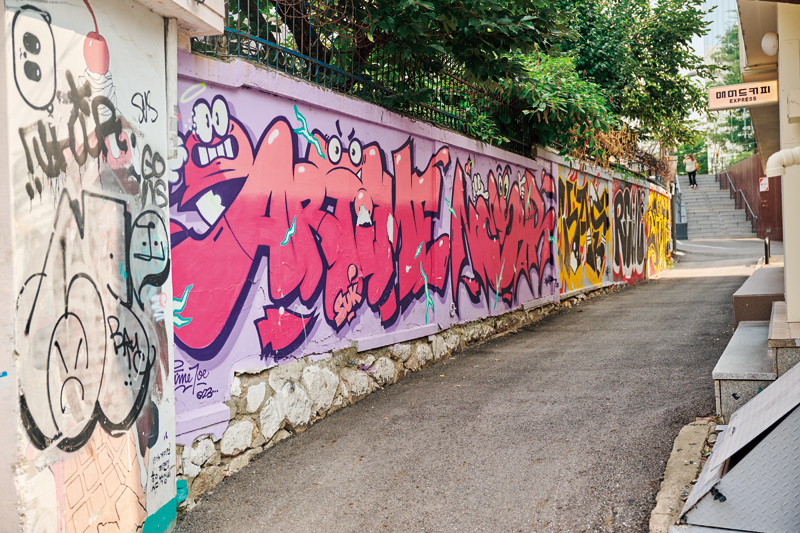
Starting point of the mural alley opposite Hongik Culture Park. The murals painted on this wall of Hongik University, created as part of the Hongdae Street Art Exhibition, recently disappeared due to construction of the university’s underground campus. However, those on the opposite side still remain.
The metamorphosis of Hongdae from a quiet residential area to a cultural powerhouse began in 1955 with the relocation of Hongik University to this locale. The subsequent launch of the university’s College of Fine Arts in 1961 and the Graduate School of Industrial Art eleven years later gave rise to a burgeoning community of artists and designers who transformed their personal studios into dynamic hubs of creativity and intellectual exchange.
In these ateliers, lively debates were sparked on a variety of subjects ranging from art to social issues, while occasional avant-garde performances took place, challenging mainstream culture. Some places were transformed into galleries, others into cafés, and at night, even into clubs. The ateliers were incubators for experimentation where unrestrained imagination was the norm.
Hongdae’s ateliers attracted artists, planners, and thinkers, creating a fertile ground for cultural innovation. Intertwined with Korea’s rapidly changing social environment, the spaces, people, and interactions that constituted Hongdae in the latter half of the 1990s solidified its reputation as a cultural trendsetter.
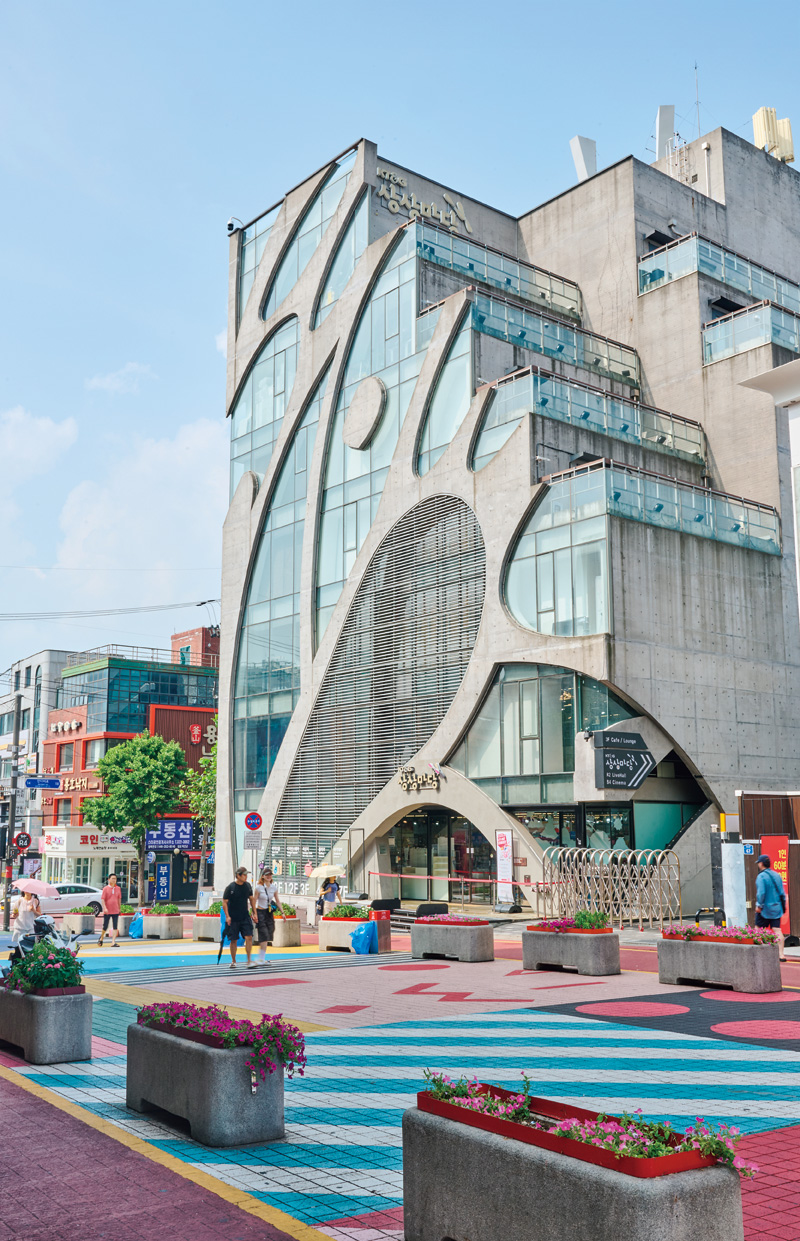
Located in the heart of Hongdae, KT&G SangSang Madang Hongdae opened its doors in 2007. This culture center houses a cinema, performance hall, and gallery, providing support for artists and a space to enjoy cultural activities for the general public.
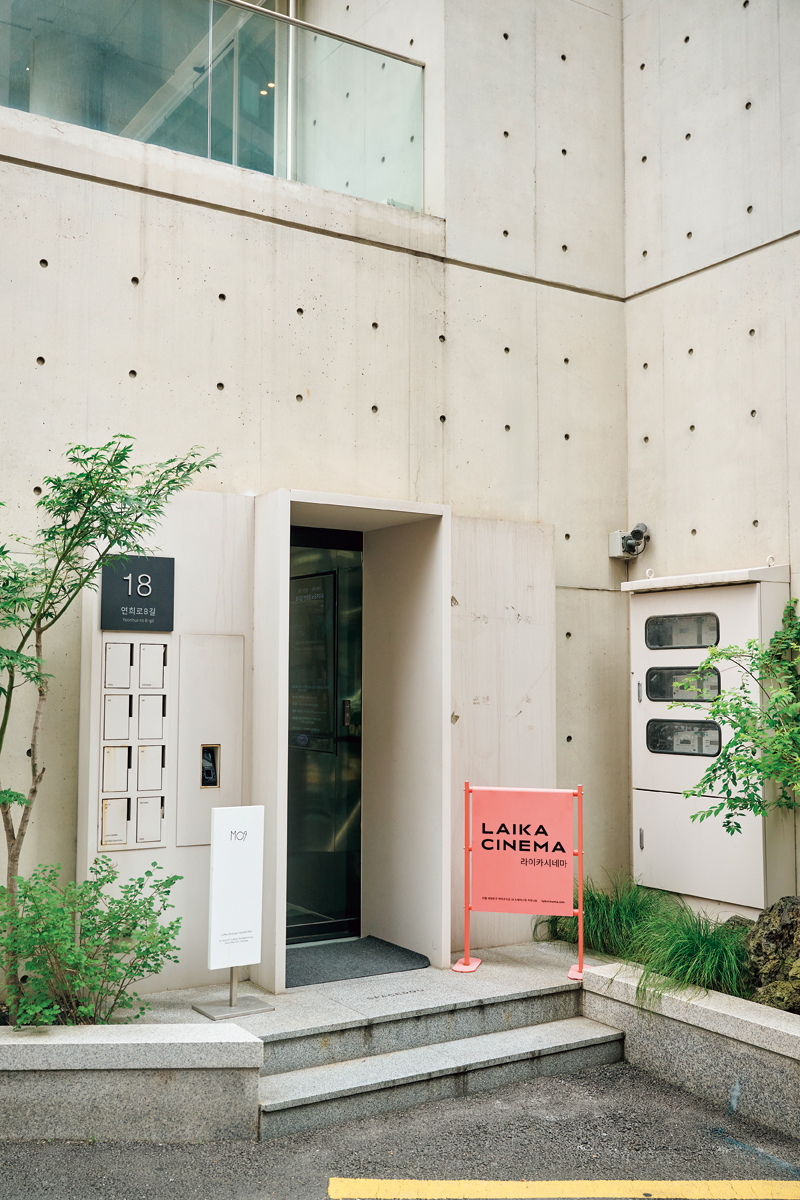
Laika Cinema, opened in 2021 in Yeonhui-dong, screens films that are rarely shown in large commercial theaters, including masterpieces by renowned directors such as Andrei Tarkovsky and Éric Rohmer.
STREETS ADORNED WITH ART
Towards the end of the 20th century, Hongdae turned into a complex tapestry woven by groundbreaking ideas and mushrooming commercialism. While the district was a haven for alternative lifestyles and subcultures, the emergence of Picasso Street signaled a growing emphasis on consumerism, a shift that raised eyebrows. The 400-meter-long stretch of cafés and entertainment venues drew comparisons to Rodeo Street in Seoul’s Apgujeong, home of upscale restaurants and fashion stores, and threatened Hongdae’s core identity as an artistic epicenter. As concerns and criticisms mounted, a movement arose, exemplified by the Hongdae Street Art Exhibition, which sought to preserve the area’s unique traditions.
Initiated by Hongik University’s fine arts students and inaugurated in 1993, the exhibition transcended the campus as students displayed their art and held performances on the streets. Its essence was captured in the creation of mural alleys, which transformed neighborhood thoroughfares into vibrant canvases and drew crowds of art and culture lovers. The enthusiastic participation of locals in painting the murals was instrumental in revitalizing the Hongdae community and triggered the creation of murals across the country to help reaffirm regional identity.
ALTERNATIVE SPACES
The emergence of alternative spaces in South Korea during the late 1990s has complex and multifaceted origins. The 1997 financial crisis played a significant role, as the ensuing economic downturn and art market slump reduced opportunities for young artists to showcase their work. Simultaneously, a diversifying cultural landscape launched a wave of experimental and innovative artistic endeavors. However, existing spaces were unable to accommodate all these new works.
In response, a different type of place began to emerge. Alternative Space LOOP opened in Hongdae in 1999, with a declared mission to discover and support new and experimental works by young artists and act as a platform for exchange and connection with international artists. Soon, similar places were appearing around the area.
The establishment of LOOP was particularly significant because it deepened and broadened the alternative culture that had characterized Hongdae in the 1990s. Those involved in this space did not view artworks as the property of a select few but considered them public and communal assets belonging to everyone. Accordingly, they helped inform the general public about artistic, social, and cultural issues brought up by artists, breaking down the barriers between the creators and consumers of art.
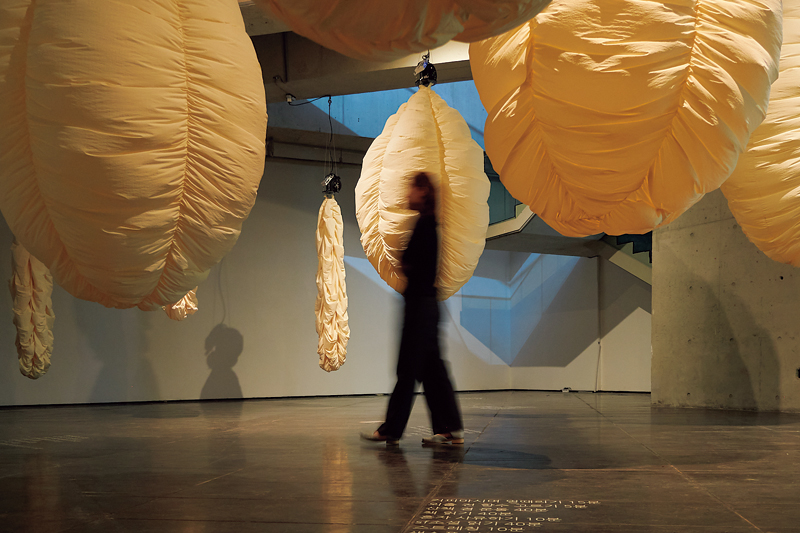
Mass Action, a solo exhibition by Chanmin Jeong, who was selected through the 2023 Alternative Space LOOP artist competition. The first place of its kind in Korea, LOOP annually selects and features experimental artists who deal with contemporary issues from a unique perspective.
©Alternative Space LOOP
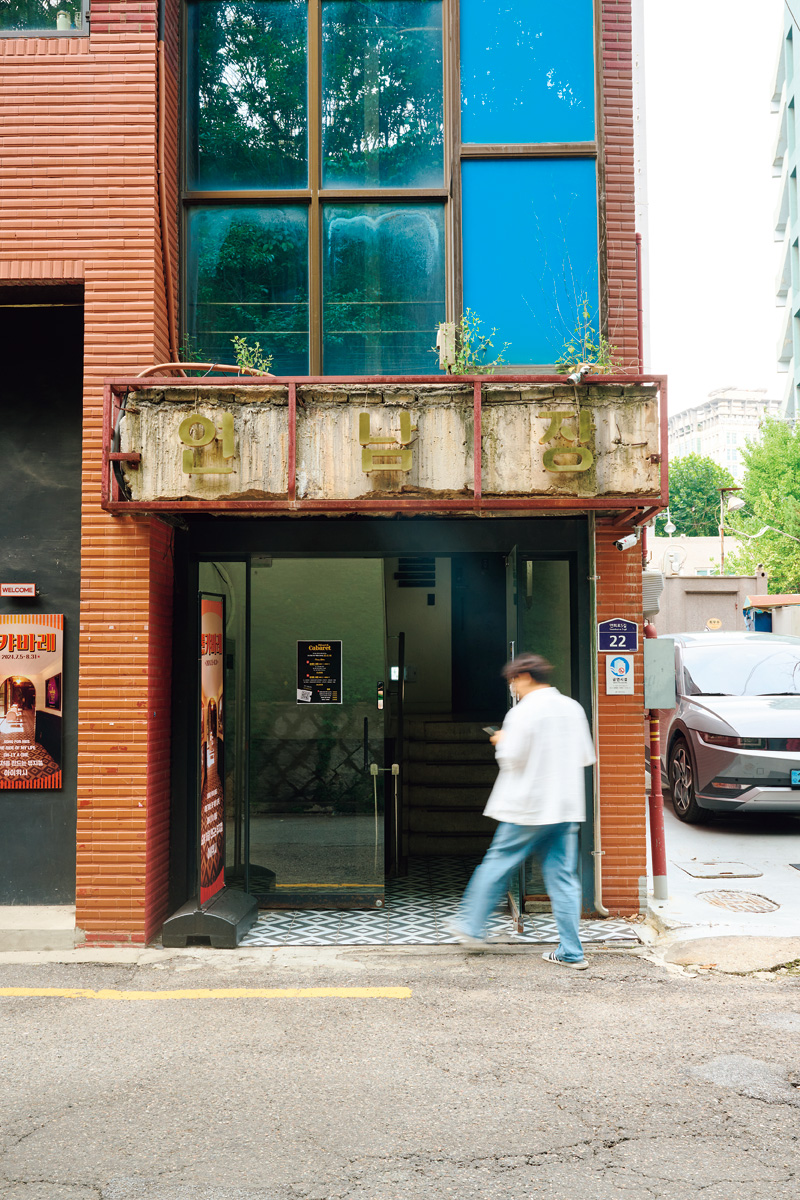
Yeonnamjang, a cinema complex that opened in 2018, offers creators in the Yeonhui-dong area a place to work and showcase the results of their efforts. The firstfloor café is designed to accommodate all kinds of events, including exhibitions and musicals.
RAINBOW ART MARKET
The 2002 FIFA World Cup, held simultaneously in Korea and Japan, led to a surge in cultural events and festivals. Hongdae was poised to play host, thanks to an idea hatched by public officials. Around that time, the Seoul Metropolitan Government and Mapo District designated an area in the neighborhood as “Hongdae Culture Street,” with the central spot being the once-overlooked Hongdae Noriteo, a playground across from Hongik University. This prompted artists and planners working in the area to collaborate on ways to develop the site. The upshot was the Rainbow Art Market, Korea’s first regular market for handmade goods, which opened in May 2002. The once quiet, underutilized open lot thus became a hub of creativity.
The market brought together sporadic art flea markets that had previously been held around Hongdae. Word of mouth spread quickly, as such markets were rare in Korea at the time, and every Sunday afternoon the playground swelled with visitors. Though the market has now left the playground and moved into an indoor studio, it helped spawn similar events nationwide and continues to play an important role in connecting art creators and consumers.
“SALON” TREND
At the start of the new millennium, numerous cafés opened in Hongdae, displaying a collective identity that set them apart from those in other parts of Seoul. Rather than providing a leisurely escape with a drink and a meal, they were places where those involved in arts and culture could mingle with and inspire each other. In other words, Hongdae cafés during this period reinterpreted the traditional salon as a contemporary site for gathering and sharing ideas and opinions.
Consequently, most cafés equipped themselves with large tables and musical instruments to accommodate gatherings and impromptu performances. Ubiquitous fliers and street magazines offered news and information on the art and culture scene, and mini makeshift flea markets often popped up.
Yri Cafe, which opened in 2004, epitomized this new wave. With a philosophy embracing all forms of artistic expression, it became a haven for free thinkers, propagating the salon trend through exhibitions, readings, performances, and seminars. In the current era of social media and niche interests, the Hongdae café scene demonstrates a clear a trend toward transforming social spaces into salon-style environments.
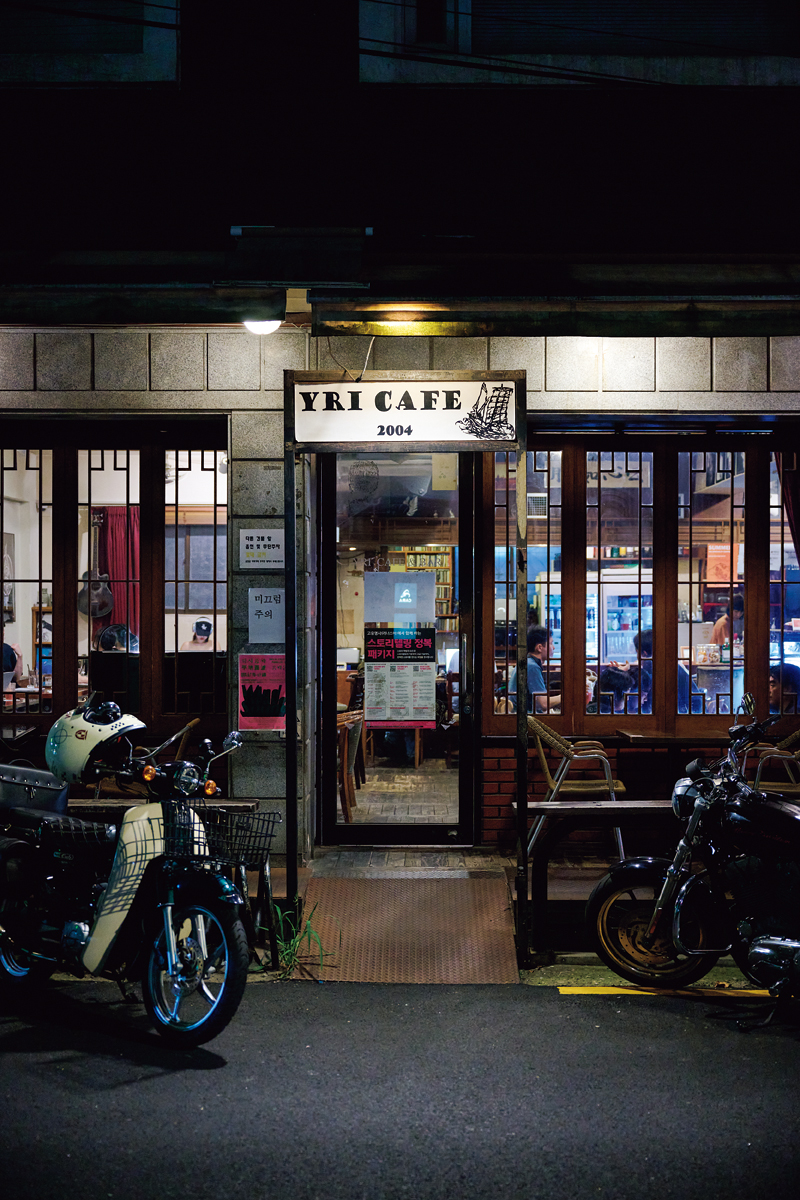
Yri Cafe opened in Seogyo-dong in 2004 as a gathering place for artists active in Hongdae. With its relocation to Sangsu-dong in 2009, it has grown into a multi-purpose space that hosts readings, exhibitions, concerts, and other cultural events.